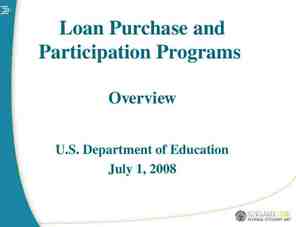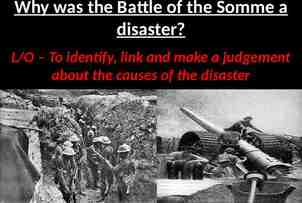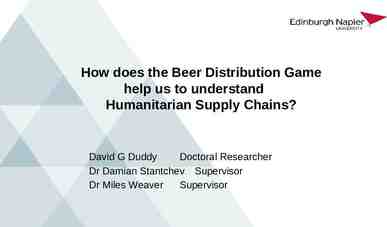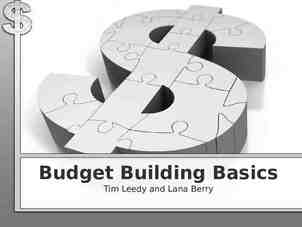CURRENT STATUS OF DENTAL CARE FOR THE UNDERSERVED SAFETY NET
23 Slides3.74 MB

CURRENT STATUS OF DENTAL CARE FOR THE UNDERSERVED SAFETY NET SUMMIT UTAH DEPARTMENT OF HEALTH MAY 19, 2009 Bruce P. Murray, Ph.D., FACHE, CAE

AGENDA 1. The recession is impacting U.S. dental underserved & dentists. 2. Who are Utah’s dental underserved? 3. Who are Utah’s safety net dental providers? 4. The recession is impacting Utah’s dental underserved & dentists. 5. Conclusions & questions/answers.

DYNAMICS OF THE DENTAL CARE MILIEU RECESSION LAWMAKERS & CMS OFFICIALS Budget Deficit Medicaid Federal Stimulus TAXPAYERS UNEMPLOYMENT PATIENTS UNINSURED UNDERINSURED PRIVATE DENTISTS SAFETY NET DENTISTS HOSPITAL E.R.S Uncompensated Care (Bad Debt/Charity Care) Cost Shift (Business Owners; Insurers; Higher Premiums) TAXPAYERS

IMPACT ON DENTAL PATIENTS Typology of patients’ changing utilization behaviors: Uninsured able to pay —no change; pay out-of-pocket; reduce usage; delay electives Insured (employer or private dental plans) —no change; reduce usage; delay electives Underinsured (Medicaid, PCN, Chip, Medicare, etc.) — ”get it while you can;” reduce usage; delay usage; pay out-of-pocket(?); seek charity care; go without Uninsured unable to pay —seek charity care at hospital E.R.s and/or free clinics; go without

PATIENTS DOING THEIR OWN DENTISTRY -Supergluing teeth—”It’s one of my front teeth, I have just been supergluing it in!” -Pulling out bad teeth—”They’ll pull it themselves rather than have it fixed.” -Taking leftover medications—”They take a family member’s old pain pills or leftover antibiotics.” -Buying street drugs for pain—”More & more people are buying street drugs, not just for addictions.” -Scrimping on looks—”They are putting off bleaching or other restorative procedures.”

PATIENTS & DENTISTS BARTERING Patients/dentists are bartering to receive/provide services, e.g., -trading baseball cards, watches, cupcakes/cookies, artwork, bicycles, a dog, flowers, plumbing/electrical services, a meal at a favorite restaurant, etc.

PATIENTS’ SEEKING EXPENSIVE TREATMENT AT HOSPITAL E.R.S -Denti-Cal cuts for 8.5M persons threaten overall health & inundate E.R.s -E.R. cost of 6,498 vs. Dental Office preventive cost of 660 1/29/09 Article – CA Dent Hyg Assn. -4 yr. study comparing prechange & postchange cuts to Medicaid funding in Maryland -Postchange rate of E.D. claims was 12% higher than prechange 2002 JADA Article—Cohen, et al.,

IMPACT ON DENTISTS 2nd ADA “Survey of Economic Confidence” 1,699 dentists—Q3-2008 VS. Q4-2008 responses More reported decreased incomes Fewer reported higher incomes More reported decrease in gross billings More reported increase in avg. A/R days --53.0% vs. 58.1% --18.0% vs.14.6% --46.5% vs. 50.1% --24.4% vs. 26.4% ”Three things happen in every recession: sales decline, receivables increase and credit tightens. . . .Dentists who think they will fly through the current recession on autopilot will be sorely mistaken!” —Dr. Michael Schuster, The Science of Creating Wealth, 2008.

PROVIDER ADJUSTMENTS (Examples) Have PMA & Work with the “right” dental team Develop creative payment methods Know & monitor practice numbers Buy-out & close a nearby practice Market services more effectively Hone patient service skills (chair-side & follow-ups) Reduce broken appointments

WHO ARE UTAH’S DENTAL UNDERSERVED? Persons “supplied with inadequate/insufficient services, esp. medical and dental.” --Surgeon General, 2000 Includes 5 populations: -Family incomes below 200% FPL -Medical disability/chronic illness -Geographically isolated and underserved -Limited literacy -Confined to residential settings —RWJohnson Foundation, 2008.

HOW MANY UTAH DENTAL UNDERSURVED? Potentially 47.8% (1.4M) of UT’s Total Population of 2.8M as of 7/1/08 --Extrapolations from Surgeon General’s Report, 2000 & current enrollment tallies Estimated 34.0% (952,000) did not visit a dentist in 2008 --Gallup Poll of 355,334 Americans, USA Today, 2008.

CHANGING USAGE PATTERNS OF UTAH’S DENTAL UNDERSERVED (Examples) More seeking Medicaid & more uninsured More families & children seeking care More referrals More demands for primary services Longer wait-times & more turned away More violence in waiting lines Fewer nursing home patients

CHANGES TO UTAH’S SAFETY NET DENTAL PROVIDERS’ PROGRAMS (Examples) Fewer services—dentures & RTCs Losing patient base & O.R. Specialty Services Undermining of patient recruitment efforts Clinics placed in mothballs or closed Moratorium on hiring new employees Losing incentives, loan repayment & personnel Employees concerned w/ viability of NFPs Losing grant funds to subsidize programs Hygiene programs receiving more applicants

UTAH SAFETY NET DENTAL PROVIDERS’ ADJUSTMENTS (Examples) Develop creative payment programs Improve marketing efforts Refer patients elsewhere Communicate better with patients Find ways to enhance employee morale & retention Apply for more grant Accept more students to dental hygiene programs Foster scheduling flexibility & modify admitting policy Acquire more donated equipment

CONCLUSIONS 1. Dental underserved numbers are increasing alarmingly as unemployment rises. 2. Current status of dental care for the underserved is undesirable & getting worse. 3. Dental underserved are not well informed about preventing dental emergencies. 4. Private dentists are accepting fewer underserved. 5. Safety net is deteriorating rapidly & portions of it may be on the brink of collapsing altogether. 6. Hospitals are being forced to become the ultimate, very expensive safety net for the underserved. 7. Perseverance in delivering dental services to the underserved is critical now for all involved.

Proverbs 29:18 “Where there is no vision (relationship of dental health to overall health), the people perish. . . .”

QUESTIONS & ANSWERS THANK YOU!












